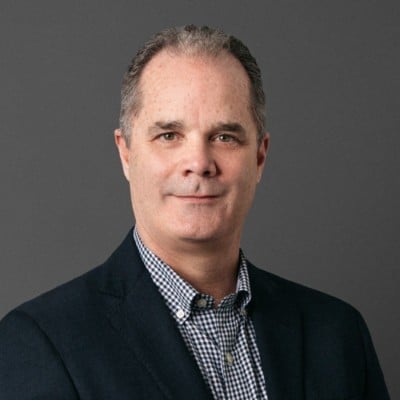3 reasons retirement plan advisors are adding modern retirement solutions to RFPs
Advisors want to ensure the retirement plans they recommend provide the best outcomes for participants. As a result, we’ve seen a broad industry shift toward modern retirement technology that meets the highest standards of fiduciary care.
Advisors are doing their due diligence: they’re increasingly incorporating technology-related questions in recordkeeper requests for proposals (RFPs), including questions about Pontera. By taking this actionable step, this reinforces a fiduciary mindset, and ensures that advisors are taking strategic steps to ensure due diligence.
The importance of participant-first technology
Technology plays a critical role in how retirement plans are managed. Advisors need tools that integrate seamlessly with recordkeepers and allow for flexible account management in order to keep up with participants’ evolving needs.
When it comes to Pontera, the increased frequency of questions in RFPs is part of an industry-wide shift toward technology that supports participant choice. By enabling advisors to manage held-away accounts like 401(k)s—securely and without triggering custody—this technology builds confidence and tangible results for participants.
1. Reinforcing the fiduciary mindset
Within the financial industry, and particularly when managing held-away assets, the purpose of technology goes beyond efficiency. These tools should help advisors fulfil fiduciary duty.
Here’s how Pontera helps advisors reinforce the fiduciary mindset and put participants first:
For advisors: Pontera empowers advisors to monitor, manage, and rebalance retirement accounts. This ensures participants’ investments remain aligned with their retirement goals, even as markets and needs evolve.
For participants: Held-away accounts like 401(k)s are often participants’ largest retirement assets. When these accounts are managed proactively and strategically—by the advisor of their choosing—they gain the confidence that their plan is tailored to their unique needs.
For recordkeepers and plan sponsors: Supporting held-away account management reflects not only a commitment to due diligence best practices, but also a participant-first approach.
By reinforcing fiduciary care across all stakeholders, Pontera helps ensure that participant-first outcomes are more than an aspiration—they’re built into the plan’s foundation.
2. Demonstrating strategic diligence
Beyond fiduciary care, including Pontera-related questions in RFPs also demonstrates strategic diligence—showing that advisors are thoughtfully evaluating plan partners and technology choices with participants in mind.
Forward-thinking advisors understand that retirement plans must evolve to meet changing participant needs. By asking the right questions in RFPs, advisors are signaling a commitment to modern, integrated solutions that strengthen both operational efficiency and participant outcomes.
But, the benefits extend beyond advisors and participants: For recordkeepers, it’s a competitive advantage to support advisor-preferred tools. And for plan sponsors, it’s an assurance that the plan is designed with long-term adaptability and participant preferences in mind.
Strategic diligence in RFPs ensures every stakeholder—from advisors to sponsors to recordkeepers—is aligned around a shared goal: delivering stronger, more adaptable retirement planning for participants.
3. Ensuring technology compatibility
Alongside fiduciary care and strategic diligence, technology compatibility is the final piece that brings everything together—ensuring that advisors and recordkeepers can operate in sync to better serve participants. That’s why it’s critical for RFPs to confirm that recordkeepers support the advisor’s preferred technology stack, especially for managing held-away accounts like 401(k)s.
Adding Pontera-related questions to an RFP signals to recordkeepers that advisors want to work with providers that are using technology that advisors trust. This has a direct impact on participants.
Pontera integrates seamlessly into the advisory workflow because it was built through direct industry feedback driven by clients asking advisors for further guidance on their future retirement savings. It enables advisors to manage held-away accounts, securely and without triggering custody.
Including Pontera in an RFP ensures this capability is built into the plan from day one and helps advisors work with recordkeepers that are:
- Thinking strategically about how to improve participant outcomes.
- Ready to align with advisors’ operational models.
- Committed to supporting secure, advisor-trusted technology.
For plan sponsors, this provides confidence that their participants benefit from full visibility, timely professional management, and a plan designed for long-term adaptability.
Together, these considerations show how including Pontera-related questions in RFPs helps align advisors, recordkeepers, and sponsors around a shared goal: delivering secure, flexible, and participant-focused retirement outcomes.
Bottom line: Making participant-first decisions
Including Pontera-related questions in an RFP is more than a technology choice—it’s a statement of a participant-first philosophy. It signals to recordkeepers that advisors expect tools supporting fiduciary excellence; to plan sponsors that participant outcomes are being prioritized; and to participants that their retirement accounts are managed with the same care and expertise as the rest of their portfolio. Book a meeting to learn more.
Don’t just take our word for it: Hear why Kyle Louvar, CEO of Guided Capital Wealth Management, includes Pontera in his RFP process.

